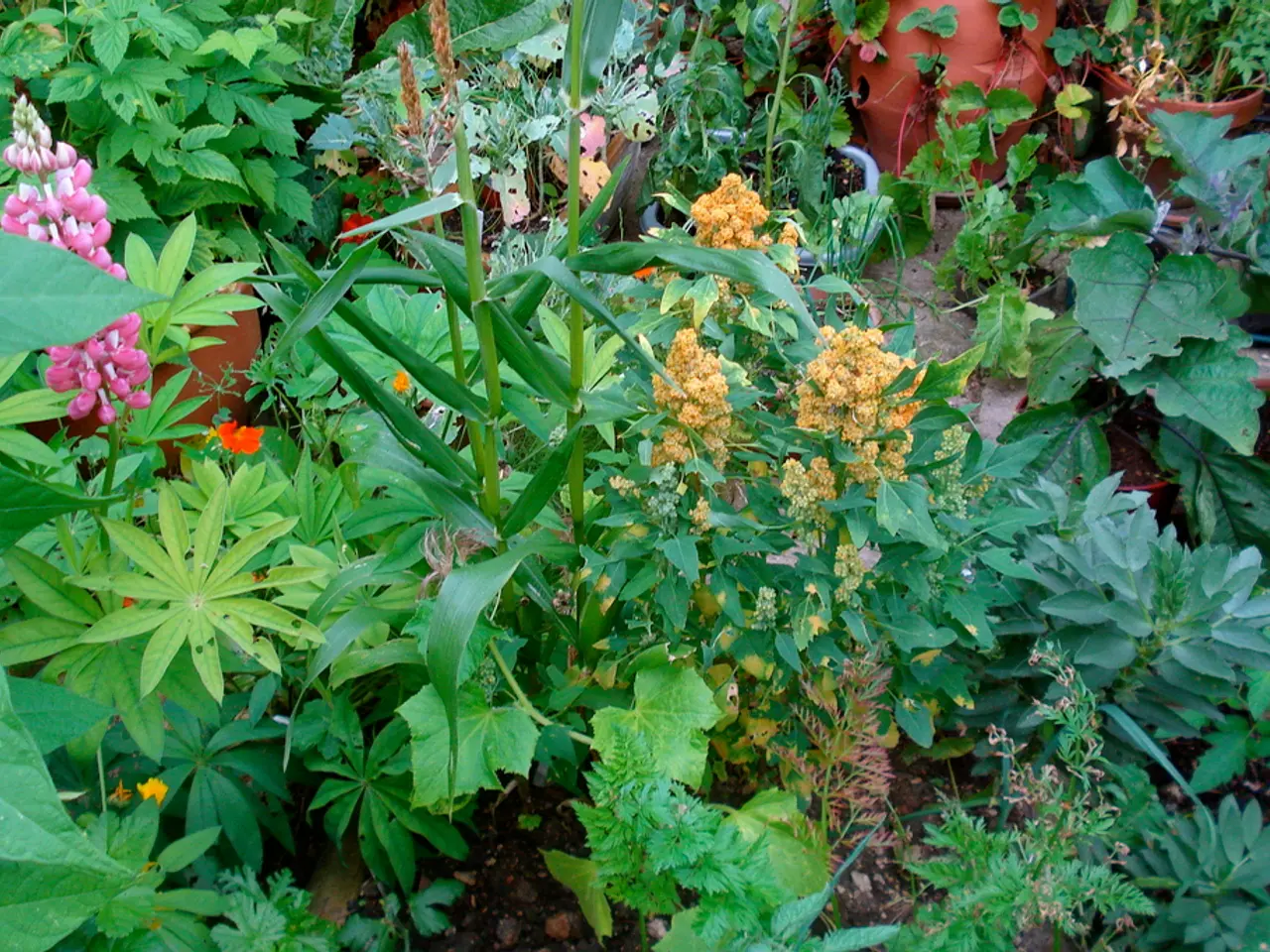Guide for Nurturing House Plants Successfully Indoors
Indoor plants are more than just decorative elements. They play a crucial role in purifying the air, reducing stress, and promoting mental health. Proper care and maintenance tailored to the plant species are essential to reap these benefits.
Choosing the right plants for indoor environments is key. Peace Lilies, ZZ Plants, succulents, and epiphytes are low-maintenance options that thrive in low to medium light and absorb harmful indoor pollutants, such as carbon monoxide, formaldehyde, ammonia, and VOCs, while releasing oxygen. This significantly improves indoor air quality, with studies suggesting up to a 25% improvement with a single plant [1][2][3].
Lighting is another important factor. Most indoor plants are tropical or semi-tropical and prefer indirect or filtered light. For instance, Peace Lilies do well in shaded areas, while ZZ plants tolerate low light well [1][2].
Watering appropriately is also crucial. Overwatering is a common issue, but succulents and cacti need less water, whereas tropical plants like Peace Lilies require more regular watering with good drainage to avoid root rot [1][2].
Maintaining humidity and temperature is essential too. Indoor plants help regulate humidity, making the air more comfortable. Tropical plants need warmer conditions, while others tolerate room temperature. Avoid placing plants in drafty or overly dry areas [1][3].
Regular cleaning and care are necessary to ensure efficient photosynthesis and air purification. Dust leaves occasionally and remove dead or yellowing leaves to maintain plant health and aesthetic appeal [1].
Placing plants strategically can also reduce noise pollution and create calming environments that reduce stress hormones, boost mood, and enhance cognitive function, leading to better mental well-being [1][4]. However, beware of toxicity as some effective air-purifying plants like Peace Lily and Elephant Ear are mildly toxic to pets and children, so position them out of reach [2].
Fertilizing your indoor plants regularly helps them thrive. Avoid placing plants near drafts or heat sources to protect them from cold drafts and extreme temperatures. Repot your plants as needed when they outgrow their pots, choosing a pot that is slightly larger and has good drainage [1][5].
Properly water your plants using a moisture meter or your finger to check soil moisture. Monitor for pests and diseases on your plants regularly and take action as needed. Regularly cleaning and pruning your plants also promotes healthy growth and prevents pests and diseases [1].
Caring for indoor plants can provide a sense of accomplishment, satisfaction, and increased oxygen levels in your home, making it a rewarding hobby. Choose the right plants for your space based on size, light levels, and humidity to create a beautiful, healthier indoor environment that contributes to your overall well-being.
[1] Wolverton, B. C., & Wolverton, D. B. (1993). Interior Landscape Plants for Filtering Air Pollutants. NASA. [2] National Geographic. (2019). These 10 houseplants are the best air purifiers. [3] University of Georgia Cooperative Extension. (2019). Indoor Plants and Air Quality. [4] Bove, M. (2013). The effects of indoor plants on the psychological well-being of office workers. Journal of Physiological Anthropology, 32(1), 37. [5] The Spruce. (2020). How to Repot Houseplants.
- To reap the benefits of indoor plants, such as air purification and stress reduction, choose species like Peace Lilies, ZZ Plants, succulents, and epiphytes that thrive in low to medium light and absorb harmful pollutants.
- Lighting is essential for indoor plants; most prefer indirect or filtered light, with Peace Lilies doing well in shaded areas and ZZ plants tolerating low light.
- Watering appropriately is crucial in preventing overwatering, an common issue; succulents and cacti need less water, while tropical plants like Peace Lilies require more regular watering with good drainage.
- Maintaining humidity and temperature is important for indoor plant health; plants help regulate humidity and prefer warmer conditions, but avoid placing them in drafty or overly dry areas.
- Regular cleaning and care are necessary to ensure efficient photosynthesis, air purification, and overall plant health, including occasionally dusting leaves, removing dead or yellowing leaves, and pruning as needed.







